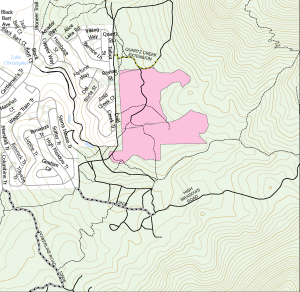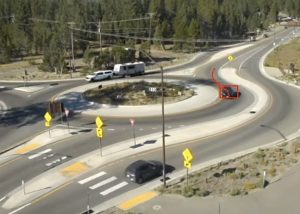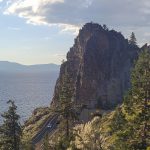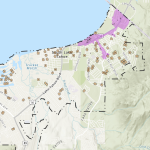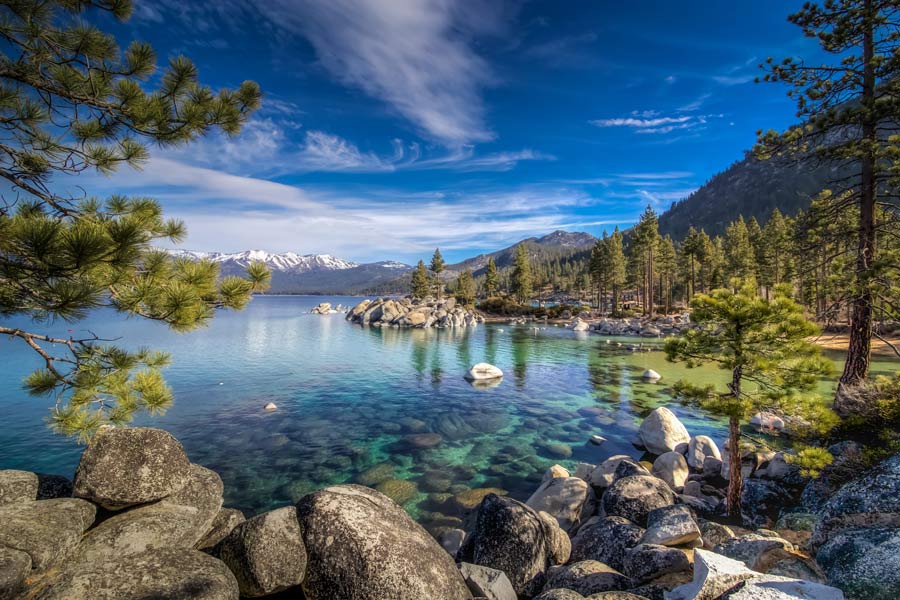Sugar Pine Point State Park changes the name of campground
At the end of May while I was in the developmental edits of Moon Guides’ Best of California State Parks to be released this winter, a curious thing happened. I was researching the Ed Z’berg Sugar Pine Point State Park campground and noticed the name of it changed from General Creek to dukMéʔem wáťa, restoring the traditional Washoe name.
Pronounced “dook-MEH-em wah-tah”, the process of changing the name to dukMéʔem wáťa Campground began back in early 2024 when the Washoe Tribe of Nevada and California sent a request to California State Parks asking the system to return the creek that runs through Sugar Pine Point (as well as all of the names associated with General Phipps) back to what the original inhabitants called it, which translates to “Wave Creek.”
In October 2024, State Parks Director Armando Quintero signed a Director’s Action Request agreeing to change the name of the campground and General Creek trail loop on the western mountainside of the park to dukMéʔem wáťa.
Washoe Elders told Tribal Chairman Serrell Smokey a story about how the creek came to be known as dukMéʔem wáťa, saying a Wá∙šiw man with special powers (wegeléyu) envisioned a tidal wave traveling from the North Shore to the South Shore. In the man’s visualization, he saw an underwater boulder on a ledge several feet in the lake and an earthquake would cause the boulder to fall and flush water onto the land in a wave tsunami which would form the creek running through Sugar Pine Point. An event known as the McKinney Bay Landslide that occurred anywhere from 12,000-20,000 years ago may be correlated with this vision.
The name dukMéɁem wáťa pays homage to the legend of “Wave Creek” while recognizing the Wá∙šiw presence in the Tahoe Basin as its original inhabitants.
In 2020, the California State Parks system launched its Reexamining Our Past Initiative, taking stock of contested names of monuments, historic sites, and interpretations of the past. One of the biggest examples of this is the renaming of Patrick’s Point to Sue-meg State Park a few years ago and launching a condor conservation program. Other parks in California, such as Fort Humboldt State Historic Park, Indian Grinding Rock State Historic Park, and McArthur-Burney Falls Memorial State Par,k recognize and celebrate indigenous culture by preserving, rebuilding, and showcasing traditional structures and gardens. Examples of this include rebuilding “galis dungal” bark houses available to view at D.L. Bliss and Ed Z’berg Sugar Pine Point state parks as well as in other areas around North Lake Tahoe.
The Reexamining Our Past Initiative allows California State Parks to interpret and share Washoe indigenous history with better accuracy to park visitors and Washoe descendants today. Changing the creek’s name (as well as the campground and trail system) to dukMéʔem wáťa also aligns with the goals of the Governor’s Truth and Healing Council as well as the Memorandum of Understanding (MOU) between the State Parks system and Washoe Tribe the two entities signed back in 2023.
“The return of the traditional Washoe name to this creek honors the history and presence of the Washoe people in the Lake Tahoe Basin,” says California State Parks Director Armando Quintero. “This connection reinforces the cultural insight carried through generations and allows State Parks, as co-stewards of these lands, to interpret and share Washoe lifeways with greater respect. It exemplifies the goals of the Reexamining Our Past Initiative—creating a more inclusive and accurate understanding of place.”
The 175-site dukMéʔem wáťa campground is one of the only Tahoe California state parks that is open in the winter. It is located on the inland mountainside of Highway 89, approximately nine miles south of Tahoe City and 20 miles north of South Lake Tahoe. Reservations to stay overnight can be made through Reserve California ($35/night summer, $25/night winter, http://www.reservecalifornia.com) from mid-May through mid-October. In the off-season winter months, a few sites are available on a first-come first-serve basis.
For more information about the Reexamining Our Past Initiative or the Ed Z’berg Sugar Pine Point State Park, visit http://www.parks.ca.gov.

Support Local Journalism

Support Local Journalism
Readers around the Lake Tahoe Basin and beyond make the Tahoe Tribune's work possible. Your financial contribution supports our efforts to deliver quality, locally relevant journalism.
Now more than ever, your support is critical to help us keep our community informed about the evolving coronavirus pandemic and the impact it is having locally. Every contribution, however large or small, will make a difference.
Your donation will help us continue to cover COVID-19 and our other vital local news.

